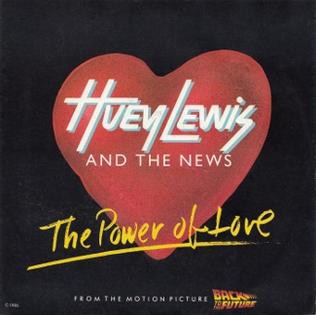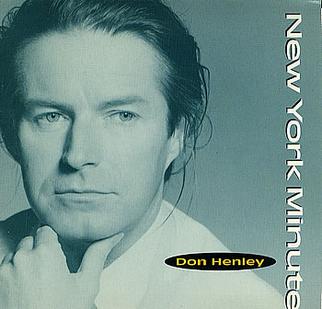 Michael Jackson’s “Smooth Criminal” is more than just a hit single—it’s a kinetic, cinematic, and musically masterful work of pop art that merges storytelling, performance, and production into something timeless. First released as part of his 1987 Bad album, the track quickly distinguished itself not just through its beat and melody, but also with its rich narrative, unique structure, and unforgettable visual aesthetic. From the opening pulse of its heartbeat-like rhythm to its explosive climax, “Smooth Criminal” stands tall in Jackson’s legendary catalog and remains one of the most dynamic songs in pop music history.
Michael Jackson’s “Smooth Criminal” is more than just a hit single—it’s a kinetic, cinematic, and musically masterful work of pop art that merges storytelling, performance, and production into something timeless. First released as part of his 1987 Bad album, the track quickly distinguished itself not just through its beat and melody, but also with its rich narrative, unique structure, and unforgettable visual aesthetic. From the opening pulse of its heartbeat-like rhythm to its explosive climax, “Smooth Criminal” stands tall in Jackson’s legendary catalog and remains one of the most dynamic songs in pop music history.
The origins of “Smooth Criminal” date back to sessions from Thriller, the seminal 1982 album that made Jackson a global phenomenon. Originally titled “Al Capone” in its early demo form, the song was a loosely constructed ode to gangster noir. Jackson was enamored with 1930s crime lore and cinema, and he wanted to channel that into something sleek and dangerous. But it wasn’t until the Bad sessions that the idea really crystallized. Under the meticulous production of Quincy Jones and co-producer Jackson himself, “Smooth Criminal” became something far more refined—rhythmic, menacing, stylish, and wholly unforgettable.
Lyrically, the song is a mystery. It tells the story of a woman named Annie who has apparently been attacked in her apartment by a “smooth criminal.” The verses act as a breathless recounting of the crime scene, offering almost forensic details—“Bloodstains on the carpet,” “Annie, are you OK?”—while never revealing the identity of the attacker. It’s part noir fiction, part musical fever dream. The repeated “Annie, are you OK?” became a cultural catchphrase, both surreal and oddly catchy. Notably, Jackson took inspiration for the phrase from CPR training mannequins, which often go by the name “Resusci Annie.” During CPR instruction, trainees are taught to ask, “Annie, are you OK?” while checking for responsiveness—Jackson twisted that sterile phrase into something haunting and rhythmic.
Musically, “Smooth Criminal” is a tour de force of tension and propulsion. From the very first moment, it hits with a staccato bassline that hammers out a syncopated rhythm like a ticking time bomb. This percussive groove is laid over a sharp, insistent drum machine pattern and topped off with layers of synth stabs, strings, and vocal punches. It’s sparse in instrumentation yet dense in intensity. Jackson’s own voice becomes an instrument, shifting from hushed urgency to explosive falsetto yelps. The production feels tight, almost claustrophobic at times, echoing the dark alleyways and panicked chase scenes the song conjures.
One of the song’s greatest assets is how it blends funk, rock, and pop elements into something sleek and futuristic. Jackson had always been an artist unafraid to cross genres, and “Smooth Criminal” may be his most efficient synthesis. It is groove-heavy but sharp-edged, danceable yet filled with danger. There are no guitar solos, no sprawling bridges—just an unrelenting rhythm that builds and builds, keeping listeners on edge throughout. There’s an urgency in the beat, a feeling of pursuit. The song doesn’t just play; it races.
Then, of course, there is the music video—arguably one of the most important and visually striking of Jackson’s career. It debuted as a centerpiece of the 1988 feature-length film Moonwalker, where “Smooth Criminal” is performed in a 1930s-style nightclub. Jackson, dressed in a pristine white suit and blue shirt, channels classic gangster film noir with a dance number that is both elegant and explosive. The choreography, filled with sudden jerks, glides, and lightning-quick spins, is hypnotic. And at the core of it all is the now-iconic “anti-gravity lean,” where Jackson and his backup dancers defy physics, leaning at impossible angles. It became one of his most unforgettable moves and a symbol of his mastery over both body and illusion.
That lean wasn’t just a camera trick—at least not on stage. For live performances, Jackson and his team developed a patented shoe system that anchored the dancer’s heels to the floor, allowing for the illusion of physical impossibility. This innovation demonstrates how Jackson didn’t just write and perform music; he reimagined how it could be presented, turning each performance into a magic act, a spectacle, a moment of awe.
Commercially, “Smooth Criminal” was a success, peaking at number seven on the Billboard Hot 100 and faring even better internationally. It may not have been the chart-topper that “Bad” or “Man in the Mirror” was, but its cultural staying power has arguably been greater. Its combination of narrative intrigue, musical precision, and dance innovation helped carve out its own legend. Over the years, it has appeared in films, TV shows, commercials, and more, becoming a shorthand for stylish danger and musical bravado.
Moreover, “Smooth Criminal” inspired one of the more successful cover versions in pop-rock history. In 2001, the alternative rock band Alien Ant Farm released a high-energy cover of the song, infused with nu-metal guitars and adrenaline-charged vocals. The track became a hit in its own right, reaching number one on the Billboard Modern Rock Tracks chart and exposing a new generation to Jackson’s dark masterpiece. Their video even parodied Jackson’s aesthetic with both reverence and humor, showing just how deeply the original video had permeated pop culture.
But even beyond commercial success or homage, “Smooth Criminal” endures because it captures something essential about Michael Jackson as an artist. It is theatrical yet minimal, high-concept yet raw. It’s a song that tells a story without giving away all its secrets, built on a groove so sharp and hypnotic that it doesn’t need a chorus in the traditional sense. Jackson’s charisma, vocal agility, and perfectionist production shine through every second of the track.
The danger in “Smooth Criminal” is not just in the story it tells, but in its delivery. There’s something slightly unhinged in Jackson’s breathless delivery, something obsessive in the repeated questions to Annie. You get the sense that the narrator isn’t just an observer—he might even be involved. This ambiguity gives the song its edge. It plays like a musical thriller, an audio suspense film that never resolves. It leaves you breathless, dancing, and slightly disturbed all at once.
The themes of crime, innocence lost, and obsession were ones Jackson would revisit again in other tracks like “Dirty Diana” or “Who Is It,” but nowhere are they more perfectly fused with dance-pop mechanics than here. “Smooth Criminal” is Jackson at his most cinematic and stylized. It’s music that looks and feels like a film even when you’re just listening.
Even today, decades after its release, “Smooth Criminal” remains a favorite among fans and critics alike. It’s been streamed hundreds of millions of times, dissected by musicologists, and revered by choreographers. Its influence is evident not only in pop and R&B, but in hip-hop, electronic music, and video art. When artists today talk about fusing storytelling with sound and visual style, they’re echoing the footsteps Jackson danced in with this very track.
It’s also worth noting how “Smooth Criminal” fits into the broader cultural moment of the late 1980s. This was an era of big production, big visuals, and global superstardom. MTV was in full bloom, and artists were expected to create not just songs, but audiovisual worlds. Jackson understood this better than anyone. With “Smooth Criminal,” he wasn’t just releasing a single—he was crafting a myth, building a legend brick by brick, move by move, frame by frame.
No other pop star of his era could move between genres, identities, and media with the fluidity Jackson did, and “Smooth Criminal” is arguably the most distilled version of that ability. It’s a song that’s dangerous but controlled, explosive but choreographed, vivid but mysterious. And perhaps that contradiction is part of its magic.
“Smooth Criminal” remains, to this day, one of the finest examples of Michael Jackson’s genius. It’s a reminder of how pop music can be theater, how rhythm can tell stories, and how an artist, through sheer vision and innovation, can turn a single song into an enduring cultural moment. Whether you’re captivated by the beat, the dance, the mystery, or the legend behind it, there’s no denying that “Smooth Criminal” is a track that changed the way we think about music, performance, and what it means to be truly iconic.


